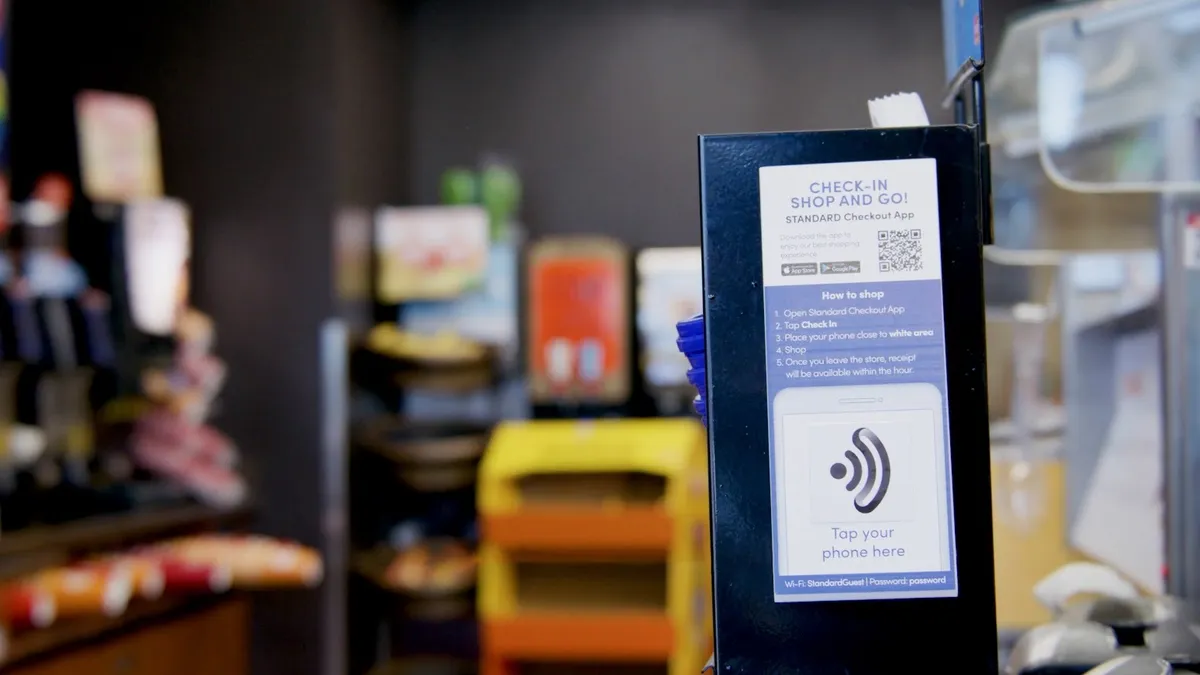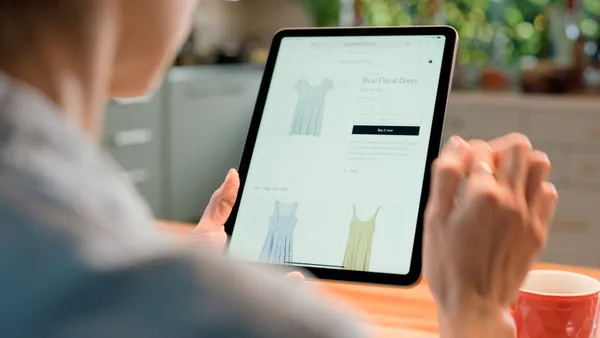Dive Brief:
- Autonomous checkout company Standard AI has launched a new bundled service called Vision OS, which includes collecting data via in-ceiling cameras to offer convenience stores strategic business insights, according to a Thursday announcement.
- Vision OS is made of three components: standard checkout, to manage labor and inflation challenges and attract new shoppers, plus an app-based dashboard that helps retailers manage store operations and the shopper experience. It also seeks to offer insights on shopper behavior and operational performance.
- Standard AI’s latest service aims to help retailers increase productivity and drive more revenue amid labor and inflation challenges, the company said in its announcement.
Dive Insight:
By offering these new shopper and operations insights, Standard AI aims to help its c-store customers make better, more informed decisions on how to run their stores, Jordan Fisher, CEO of Standard AI, said in an interview at the 2022 NACS Show.
“We were able to [say], ‘Hey, this is where you're having compliance issues or this is actually where people are standing, but they're not looking at your shelves,” he said. “This is why you're not converting in this part of your store.”
San Francisco-based Standard AI’s checkout-free platform works in any existing store. It allows customers to walk in, take what they need and walk out without waiting in line or stopping to scan or pay. Standard AI has launched multiple operational stores and is working with international retailers.
Standard AI’s new dashboard lets retailers understand things like which shelves need restocking, when their store is out of compliance with its display models and when a shopper grabs an item that might require an ID to purchase.
“[Staff] can have this real visibility into what's happening in their store,” he said. The service “also helps them free up some of their time so they can spend more time with shoppers.”
With Vision OS, Standard AI also wants to help c-store retailers answer fundamental questions about their businesses, including where people typically go in a store, how they interact with the products, where people dwell and what items people choose between.
“It's really about ‘How is your store running. … How is your shopper engaging in your store?’’” Fisher said.













